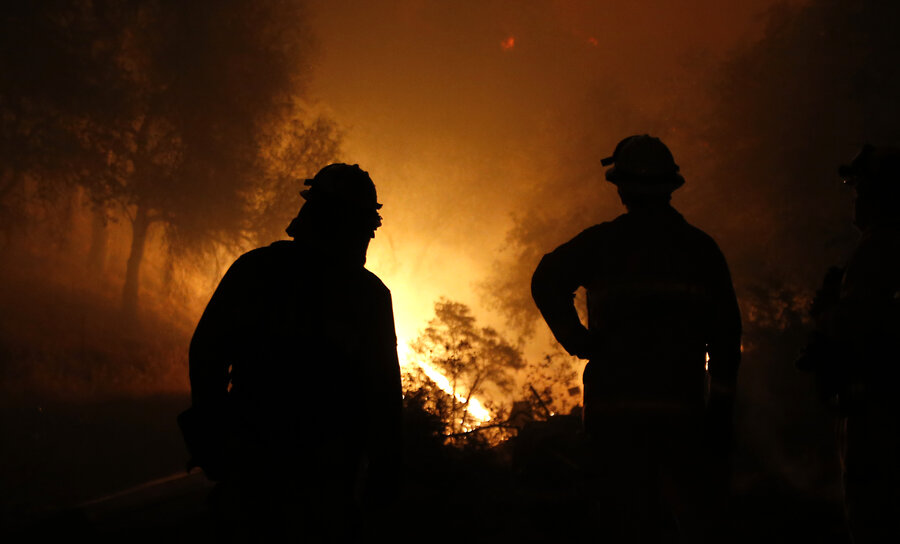Small gains made against wildfire menacing California towns
Loading...
| SAN ANDREAS, Calif.
Firefighters gained some ground Saturday against an explosive wildfire that incinerated buildings and chased hundreds of people from mountain communities in drought-stricken Northern California.
The blaze exploded to more than 100 square miles in two days, but crews increased containment to 10 percent overnight, state fire officials said. Fifteen structures were destroyed, and about 6,400 others were threatened.
Bright orange flames burning in the hills were visible from the edge of San Andreas, a gold-rush town about 60 miles southeast of Sacramento whose 2,700 residents were all told to evacuate briefly Friday before the fire shifted and they were allowed stay — for now.
But hundreds of people from smaller surrounding communities fled their homes and filled up evacuation centers, one of which had to be moved twice to get it a safe distance from the flames.
Michelle Griffiths checked on livestock Saturday in Angels Camp, a quaint town made famous by Mark Twain's "The Celebrated Tale of the Jumping Frog of Calaveras County." She spent much of the night rescuing her neighbors' four horses and several cats from their home in Mountain Ranch in the foothills threatened by the fire.
"People were running for their lives two nights ago," which is when her neighbors left their house and livestock for a motel, Griffiths said.
"Fortunately, our house is still standing" and so is the neighbors', she said.
Those in San Andreas were told they may still have to clear out. Some had already left.
Fred Oshiro, 85, said he, his wife and his wife's sister loaded up the car and went to an evacuation center, only to learn that it had been moved.
He said the three of them only brought some essentials, so "if the house burns down, we'll lose a lot."
The evacuation center that moved twice had started at San Andreas Town Hall.
"I had to move a kitchen full of food, 217 beds, three huge air conditioners," said Gina Gonzales, a Red Cross volunteer organizing the center.
The center was then shifted to the nearby Calaveras County fairgrounds. But officials then decided to make that a staging area for the battle against the blaze, and the evacuation center was moved to Valley Springs, about 20 miles from its original location.
Despite the runaround, volunteers said there was no lack of volunteers to help or supplies that were donated.
"They put out a call for 30 to 40 pillows, and we got 400," said Debbie Calcote, a Red Cross organizer. "It's what communities do."
Gov. Jerry Brown declared a state of emergency for the blaze burning in both Calaveras and Amador counties, helping to free up funding and resources in the firefight.
There are 3,000 firefighters assigned to the blaze that ignited Wednesday, and more expected to arrive throughout the day. Its cause is under investigation.
"The plan is to try to get this thing out," state fire spokeswoman Nancy Longmore said. "It's going to take quite a bit of work. We're in for the long haul here."
Meanwhile, another California wildfire threatened to sweep through an ancient grove of Giant Sequoia trees. The lightning-caused fire has charred 172 square miles and grew by nearly 40 square miles in the last week.
In a fight to save the trees, firefighters have been clearing lines with bulldozers around the Grant Grove and putting up sprinklers, said Andy Isolano, a spokesman for the Clovis Fire Department.
The grove is named for the towering General Grant tree that stands 268 feet tall. There are dozens of Sequoia groves in the Sierra Nevada, and some trees are 3,000 years old.





